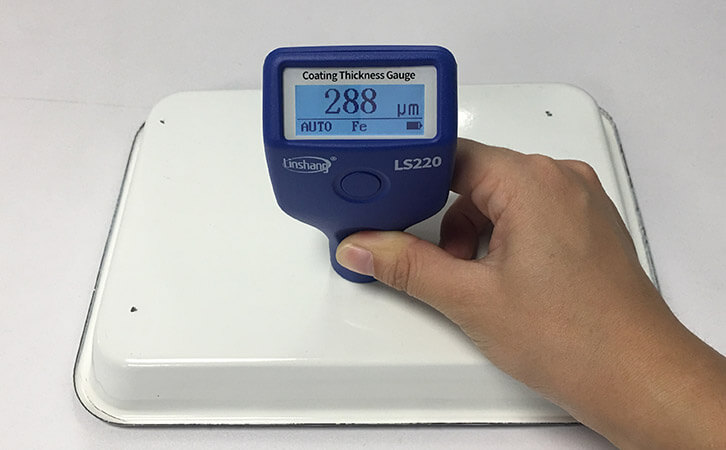Enamel Coating thickness on Steel Surface
China is a big steel producer. Both the quantity and quality of steel can be highly guaranteed. Of course, high-quality steel is definitely inseparable from the protection of the surface enamel. Enamels of different thicknesses have different properties that extend the service life of the steel. But we can accurately measure its thickness using a magnetic thickness gauge.
The magnetic thickness gauge uses a simple electromagnetic induction principle to measure the thickness of non-magnetic coatings on various magnetic metal substrates. Magnetic thickness gauge is commonly used to measure the thickness of various coatings and claddings on steel surfaces. The state has strict control over the inspection of steel materials, because magnetic thickness gauges can accurately measure steel surface coating thickness, which is helpful to help producers and quality inspectors to determine the quality of steel. Select a magnetic thickness gauge as the preferred self-testing instrument.

Many people will go into such a misunderstanding, thinking that the thicker the enamel on the surface of steel, the better the protective performance. In fact, whether it is theoretical or actual, this statement is wrong. The wrong view is that there is not enough knowledge about enamels on the surface of steel. Many people may not know much about enamels on the surface of steel. Little is known about the properties of different thicknesses.
Facts often need to be proved by scientific evidence. According to a research survey conducted by Materials, the thickness of steel enamel on the steel surface and its performance do not show a direct mechanical relationship, but have a certain turning relationship. The specific situation is shown in the following figure:
| No. | Raw material | Environment | Stee | EnamelThickness | Hardness | Corrosionresistance | Wearresistance |
| 1 | enamelpowder | at the temperature of 900 ℃ for 45 minutes | the surface of 38CrMoAl steel is 116μm | 116μm | increase | increase | increase |
| 2 | 256μm | increase | increase | increase | |||
| 3 | 352μm | minus | minus | minus | |||
| 4 | 470μm | minus | minus | minus |
According to the above table, we can clearly and intuitively see that when the coating thickness is between 116 μm and 256 μm, as the thickness of the glaze porcelain increases, the steel properties also increase. When the coating thickness is between 352 μm and 470 μm, the performance of steel gradually decreases with the increase of the glaze porcelain thickness. This shows that the properties of the enamel on the steel surface are increased and then decreased with the increase of the enamel thickness. When the thickness is 256 μm, the glazed porcelain on the steel surface has the highest hardness, wear resistance and corrosion resistance. Therefore, the enamel thickness on the steel surface needs to be determined according to standards and the coating cannot be made too thick or too thin.
Whether it is a steel manufacturer, a steel purchaser, or a steel quality inspector, it is impossible to use the naked eye to accurately determine the thickness of the steel surface glaze porcelain. The most dependent instrument is a magnetic thickness gauge. It is not all thickness gauges can be used to measure the thickness of enamel on steel surfaces. Because of the physical characteristics of steel and surface enamel and the magnetic thickness gauge has the principle of electromagnetic induction.
The magnetic thickness gauge has many advantages, not only the wide measurement range and high resolution, but also the simple measurement method.
- High precision coating thickness gauge for used car
- Automotive paint protection films coating thickness gauge
- Plating Thickness Measuring Instrument for Detecting Anti-corrosion Coating
- Linshang LS220, LS191, LS160A– Necessary for Car Cover Inspection
- Coating Thickness Gauge for Second Hand Vehicle
- Zero Adjustment Step of Coating Thickness Gauge